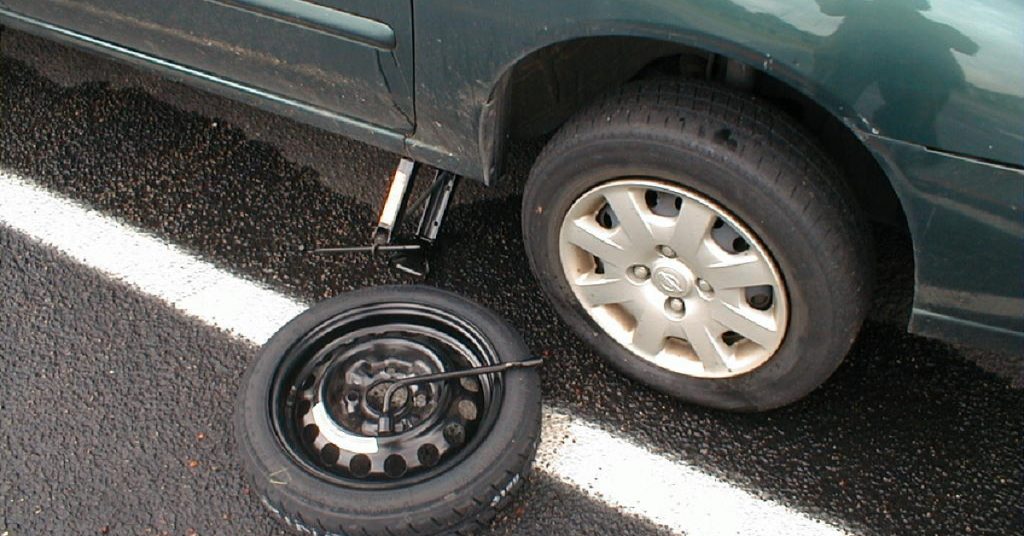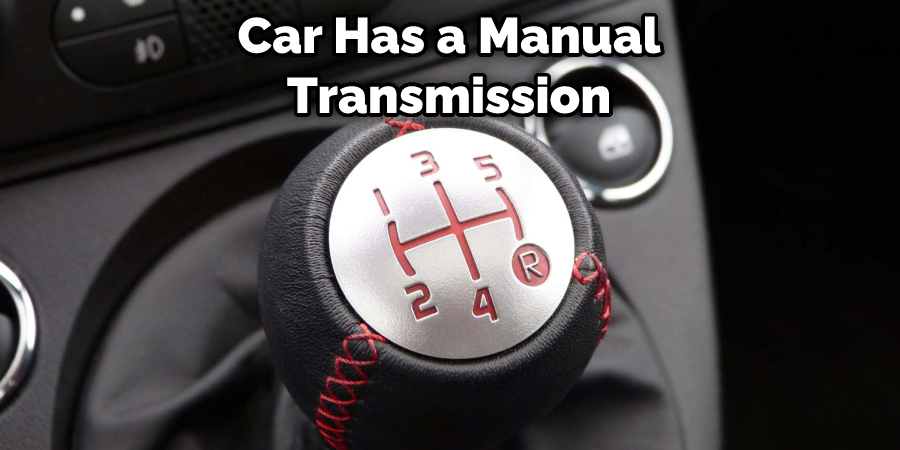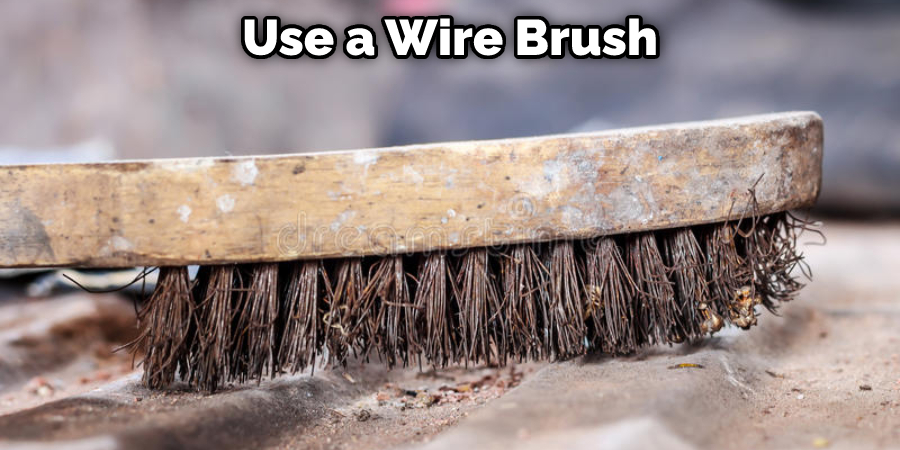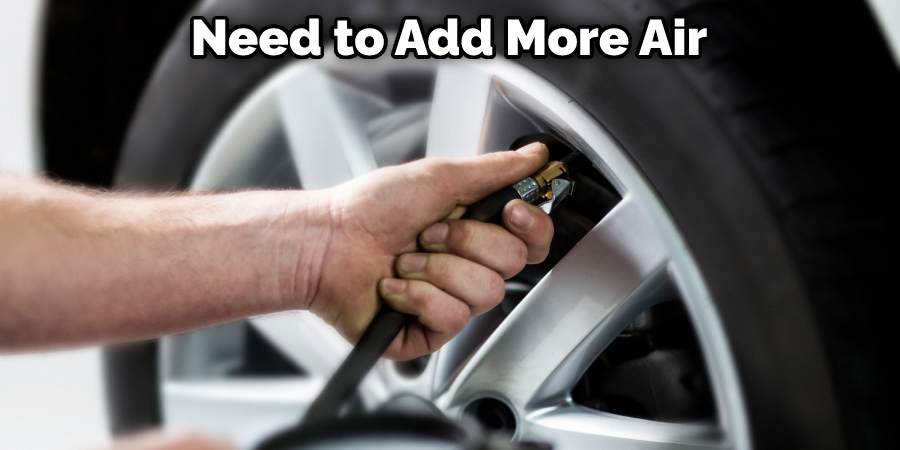Slashed tires can be very dangerous, as they can cause the vehicle to lose control or even lead to a crash. If you have a slashed tire, getting it fixed as soon as possible is important. It’s always a pain when you get a flat tire, but it’s even worse when you have to fix a slashed tire.

Unfortunately, this is something that happens all too often on the road. You can be prepared for anything if you know how to fix a slashed tire. In this article, we’ll teach you the basics of fixing a slashed tire so that you can get back on the road as quickly as possible. Remember that this is a temporary fix, and you will need to replace the tire as soon as possible.
Summary: Having a tire slashed can be a real danger on the road. First, pull over to a safe location and put your emergency brakes on to fix it. Inspect the tire to find the area which has been damaged, clean it and then apply a patch. Finally, put some air in the tire, get it back on the ground and test it before continuing your journey.
What Causes Slashed Tires?
There are a few different things that can cause slashed tires. However, the most common causes are:
Potholes:
A pothole can cause major damage to your tires, including slashes and punctures. Avoiding potholes whenever possible is important, but sometimes they’re unavoidable. If you do hit a pothole, inspect your tires for any damage.
Road Debris:
Debris on the road, such as nails, glass, or even metal, can cause slashed tires. This is especially common in construction zones where a lot of debris is on the ground. If you see debris on the road, do your best to avoid it.
Curbs:
Hitting a curb can also cause damage to your tires, including slashes. Curbs are often hidden by snow or leaves, so they can be hard to see. If you’re not careful, you could hit one and damage your tire.
Careless Driving:
In some cases, slashed tires are simply the result of careless driving. For example, if you’re driving too fast over a speed bump, you could damage your tires. Or, if you hit a curb while parallel parking, you could also slash your tires.

Weather:
In some cases, weather can also cause slashed tires. For example, if you’re driving in a severe thunderstorm, you could run over a branch or piece of debris that could damage your tires. Weather can also cause potholes to form, which can damage your tires.
Vandalism:
Unfortunately, sometimes slashed tires are the result of vandalism. This is most common in areas where there is a lot of crime or violence. If you think your tires have been slashed by vandalism, it’s important to report it to the police.
Things You’ll Need
- Jack
- Lug wrench
- Spare tire
Step by Step Guide on How to Fix a Slashed Tire
1. Pull Over to a Safe Location:
The first thing you need to do is pull over to a safe location. If possible, try to find a spot where no other cars are around. This will make it easier to work on your tire, and you won’t have to worry about traffic.
2. Put on Your Emergency Brakes:
Once you’ve found a safe spot, put on your emergency brakes. This will help keep your car from rolling while working on it. You can also put your car in first gear or reverse if your car has a manual transmission. It’s also a good idea to turn on your hazard lights so that other drivers know you’re there.

3. Inspect the Tire:
Before you do anything, take a look at the tire to see how bad the damage is. If the slash is small, you might be able to just put a patch over it. However, you’ll need to replace the tire if the damage is more severe.
4. Let Some Air Out of the Tire:
If you’re going to patch the tire, you’ll need to let some air out of it first. This will make working on the tire and applying the patch easier. Next, use your lug wrench to loosen the lug nuts to let the air out of the tire. Then, use your jack to lift up the car so that the tire is off the ground. Once the tire is off the ground, use your lug wrench to remove the valve stem cap. Then, use your tire gauge to let some air out of the tire. Let the tire down slowly until it’s about half full.
5. Find the Slashed Area:
Once you’ve let some air out of the tire, you can start to look for the slashed area. The best way to do this is to run your hand along with the tire until you feel the slash. If you can’t find it, you can also use a flashlight to look for it.
6. Clean the Area:
Once you’ve found the slashed area, you’ll need to clean it off. This will help the patch to adhere better. The best way to clean the tire is to use a wire brush. You can also use a knife or razor blade to scrape off any excess debris. You can also use sandpaper if you don’t have a wire brush.

7. Apply the Patch:
Once the area is clean, you can apply the patch. There are two main types of patches: cold patches and hot patches. Cold patches are the most common and are pretty easy to use. To apply a cold patch, simply peel off the backing and press it onto the tire.
Make sure that you press it on firmly so that it will stay in place. Hot patches are a little more difficult to use but provide a stronger seal. To apply a hot patch, you’ll need first to heat up the tire with a blow dryer. Then, peel off the backing and press the patch onto the tire.
8. Put Some Air in the Tire:
Once you’ve applied the patch, you’ll need to put some air back into the tire. To do this, use your tire gauge to add air to the tire until it’s full. If you don’t have a tire gauge, you can also just put the valve stem cap back on and let the air out until the tire is full.
9. Put the Tire Back on the Ground:
Once the tire is full, you can put it back on the ground. To do this, use your jack to lift up the car and then put the tire back on the ground. Once the tire is on the ground, use your lug wrench to tighten the lug nuts.
10. Test the Tire:
Once you’ve put the tire back on the ground, it’s a good idea to test it out. To do this, drive around for a few minutes and see how it feels. You’re all set if the tire seems to be holding air and isn’t leaking. If the tire is still leaking, you might need to add more air or patch it in another spot.

How Much Does It Cost to Fix a Slashed Tire?
The cost of fixing a slashed tire will depend on the severity of the damage and whether you choose to patch or replace the tire. If the damage is minor and you choose to patch the tire, you can expect to pay around $10-$20 for the patch. If the damage is more severe and you need to replace the tire, you can expect to pay around $100-$200 for a new tire.
Tips and Warnings on How to Fix a Slashed Tire
Tips:
- Use a tire plug kit to fix the hole in your tire.
- If you cannot find a kit, use a rubber cement patch or a piece of inner tube to patch the hole.
- Use super glue or epoxy to seal the patch’s edges.
- Inflate the tire with an air compressor or by using a tire pump.
- Be sure to check the tire pressure regularly.
Warnings:
- Do not drive on a tire with a hole larger than a quarter inch.
- Do not overinflate the tire after patching it. This could cause the tire to explode.
- Check the pressure of the patched tire often to make sure it is holding air.
- Be sure to have the tire inspected by a professional before driving on it for an extended period of time.
Can You Drive on a Slashed Tire?
It is not safe to drive on a tire with a large hole or slash in it. The tire could explode while you are driving, causing you to lose control of the vehicle. If the tire is only slightly slashed, you may be able to drive on it for a short distance, but you should have it patched or replaced as soon as possible. Slashed tires can be very dangerous, so it is always better to be safe than sorry.
Frequently Asked Questions
Can You Repair a Sliced Tire?
Yes, you can repair a sliced tire. In fact, this is a common occurrence when drivers don’t slow down for traffic ahead or fail to make a turn. Slow speeds and poor turning habits are the main reasons why tires get slashed. By repairing the tire before it becomes an emergency, you will reduce your chances of getting stranded on the side of the road with no way to fix your car.
There are many tools that you can use to patch up a slashed tire including patches and glue guns. However, some people prefer using liquid nails because they allow for easier dispensing and quick drying time (important if you have any other tasks pressing upon during your roadside visit).
What Do I Do if My Tires Were Slashed?
If your tires have been slashed, the first thing you should do is call the police. This will help to ensure that any criminal activity related to the incident is documented and investigated. Secondly, you may want to consider filing a report with your car insurance company. If your car was damaged as a result of this crime, they may be able to provide benefits in relation to damages or repairs.
Will a Slashed Tire Go Flat Immediately?
it depends on a variety of factors, including the type of tire, the severity of the slash, and the weather conditions. In general, however, it is generally safe to drive a car with a slashed tire as long as you take care not to overheat or overdrive the vehicle. Additionally, make sure to change the tire as soon as possible – even if it doesn’t seem to be flat. Doing so will help prevent further damage and ensure a safer ride.
Does Flex Seal Work on Tires?
Flex Seal is a sealant that can be used on tires to help prevent water and road debris from seeping into the tire, causing it to go flat. The sealant is applied by hand or with a pneumatic press and cures in about an hour. It’s important to note that Flex Seal should not be used on alloy or carbon-steel tires as it may damage them.
Flex Seal has been shown to provide long-term protection against water and road debris penetration, which will prolong the life of your tires and reduce the chances of having them replaced prematurely. Additionally, it can also improve traction in wet conditions by reducing hydroplaning tendencies.
Conclusion
So there you have it! Now that you know how to fix a slashed tire, you can be self-sufficient and prepared for any roadside emergency. Remember always to carry a spare tire and practice changing your tires so that you’re ready for anything. Have we missed anything? Let us know in the comments below. Thanks for reading.
